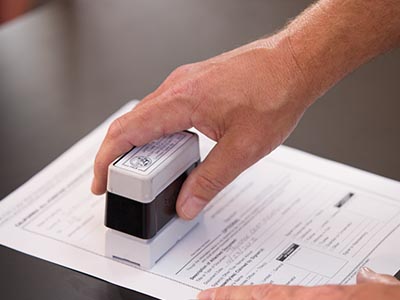Are you moving out soon? There is one more thing you need to do before finally turning over the apartment to the new tenant. Make and give a move in move out checklist. A checklist has a dual purpose: first is to inform the landlord if there is any pre-existing damage; and second is to make sure that the new tenant will not have to pay for the said pre-existing damage, if any.
By assessing any damage, it can be determined whether the damage pre-existed before the new tenant comes in. Why does this matter? It is important to determine who will pay for the damage. If the damage existed while t

he lessee was still living at the rented house, then the lessee will need to cover the cost of the repair. If not, then the cost will have to be deducted from the initial security deposit made by the new tenant.
In other words, a move in and move out checklist will serve as a proof whether the damage was pre-existing or it occurred after the new tenant moved in. Without a checklist, the new tenant will be able to dispute the deductions. However, with this checklist, the landlord will be able to prove with certainty that the damage should be covered by the new tenant. If you need help with your checklist, you can check out DLL Cleaning Services in New York.
Guide to Creating a Move in and Move Out Checklist
Make sure that you put this information at the top of the document: the tenant’s full name, the address of the property, and the move-in or move-out date. You must also note the dates of the first inspection and the last inspection. Include the name of the person or company that conducted the inspection.
In creating your checklist, make sure that you properly put headings to correspond to the parts of the house. You can use this example as a guide in making your own checklist:
Living Room
- Floors
- Walls
- Ceilings
- Doors
- Locks
- Windows
- Window treatments
- Fireplace
- Lighting
- Smoke detectors
- Radiators
- Electrical outlets
Kitchen
- Floors
- Walls
- Ceilings
- Windows
- Window treatments
- Lighting
- Smoke detectors
- Radiators
- Electrical outlets
- Exhaust fan
- Countertops
- Cabinets
- Pantry
- Faucet and sink
- Dishwasher
- Refrigerator
- Stovetop and oven
- Garbage disposal
- Others
Bathroom
- Floors
- Walls
- Ceilings
- Doors and locks
- Windows
- Window treatments
- Lighting
- Radiators
- Electrical outlets
- Bathtub and shower
- Toilet and plumbing
- Faucet and sink
- Towel racks
- Closets
- Others
Bedroom
- Floors
- Walls
- Ceilings
- Doors
- Locks
- Windows
- Window treatments
- Closets
- Lighting
- Smoke detectors
- Radiators
- Electrical outlets
- Others
If the property has more rooms, then just add more headings for the other rooms. Just add, remove, or modify the items included in the above-given checklist to suit your needs. Aside from the checklist, make sure that you take care of other things as well, such as taking before-and-after photos of the property, checking pre-existing pest and bug problems, move in and move out cleaning, and thoroughly reading the lease agreement. Now you can finally hand over the keys to the new tenant.
Learn more
As a landlord, you have a legal obligation to look out for the best interests of your tenants and ensure that they are safe. The law holds you res ...
Whether you’re moving across the country or simply relocating for some extra space, there are several things to remember once you’ve decided to se ...
Being involved in a car accident is a harrowing experience. It’s therefore important to know ahead of time what you should do if you ever find you ...
It is generally known among landlords that the most reliable income stream comes from families, which is why many landlords would prefer them in t ...
As a landlord with a residential property that you let to tenants, chances are you’ve invested in a rental home as a means of securing a comfortab ...







